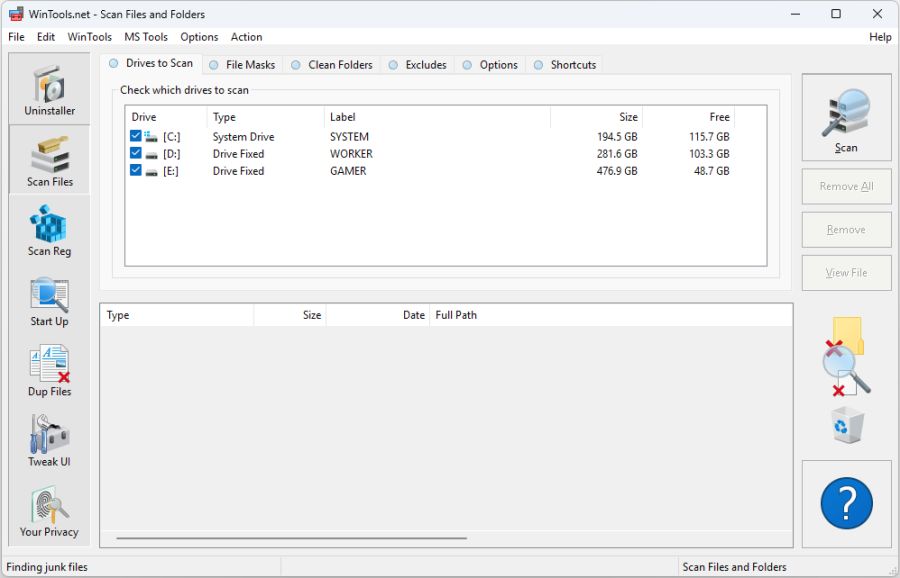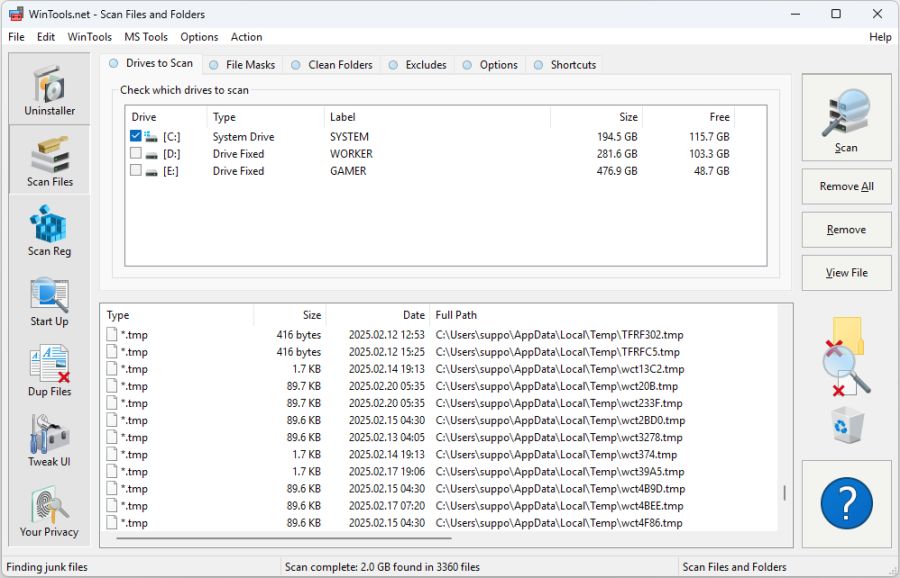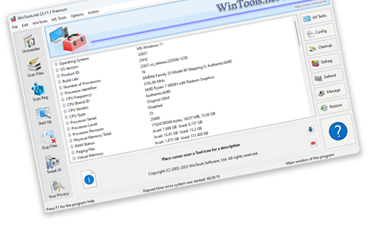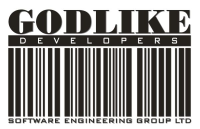How to clean the operating system from temporary files and free up disk space?

During operation, the MS Windows operating system and many third-party programs create various auxiliary files, such as:
- Temporary files (.tmp)
- Old file copies (.old)
- Logs (.log)
- Image cache files (thumbs.db)
- Backup files (.bak)
Over time, the accumulation of these files can fill up the hard drive and system folders, leading to decreased performance and slower system operation.
To solve this problem, it is recommended to regularly scan your computer and delete such files. To simplify this process, use the WinTools.net program. It automates cleaning, quickly finds unnecessary files, frees up disk space, and improves computer performance. Using WinTools.net greatly simplifies the search and removal of unnecessary files, ensuring more efficient use of your computer's resources.
1. To find and delete temporary files, launch WinTools.net. In the left menu of the program, select the Scan Files and Folders tool by clicking on the Scan Files button. This tool will help you scan your computer and find temporary files. On the Scan Files and Folders tool page, you will see a list of your computer's disks that the program will scan. Below it is a list where the found results will be displayed. To the right of the lists, there are the following buttons:
- Scan: this button starts the scanning process of the checked disks.
- Remove All: this button deletes all found temporary files.
- Remove: allows you to delete only the files you selected from the list of found temporary files.
- View File: allows you to view the contents of the selected file by opening it in Notepad.

2. When you click the “Scan” button, the scanning process of the selected disks begins. The scan results are displayed in the list below, showing the found files and their characteristics, such as file name, location, size, and last modification date. This helps you better understand which files are taking up space on your disk.
In the example below, after the scanning process is completed, the program found 3360 files occupying 2.0 GB on the hard drive.

3. To delete all the found files, click the “Remove All” button. If you want to delete only specific files, select them from the list and click the “Remove” button. In this case, only the selected files will be deleted. Note that after deletion, the files are moved to the Recycle Bin. This provides additional protection, as in case of an error, you can always restore the deleted files from the MS Windows Recycle Bin.
The “Scan Files” tool also offers additional user settings, allowing you to add your own file masks and exclusion folders that will be skipped during the scan. These settings make the “Scan Files” tool flexible and customizable, allowing users to tailor the search and removal process of temporary files to their specific needs.




